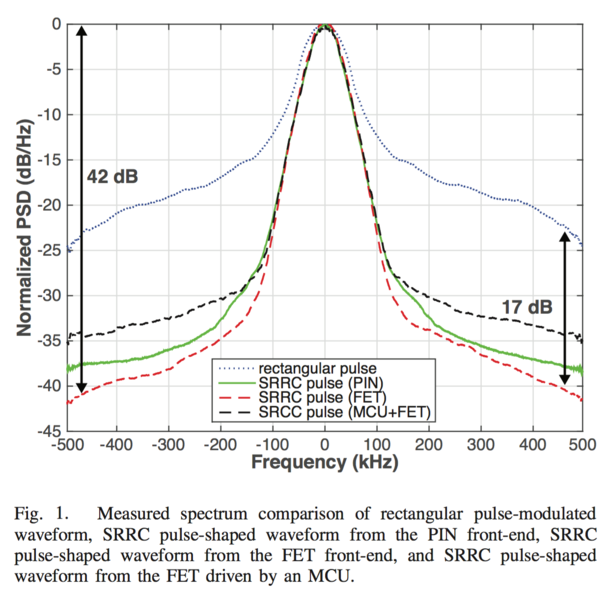Inventors John Kimionis and Manos Tentzeris have developed techniques and an apparatus regarding RF front-ends that control the tag reflection coefficient over time in a continuous manner, thus enabling the generation of arbitrary backscattered waveforms and reduced bandwidth occupancy. Compared to repetitive lobes in rectangular pulses, square root raised cosine (SRRC) and other arbitrary waveforms feature a main-lobe bandwidth in the spectrum occupancy. These waveforms are generated using complex backscatter modulation schemes by exploiting continuous variation of the antenna load, instead of switching between two discrete values. While maintaining low RF front-end complexity, PIN diodes, field-effect transistor (FET), or any other non-linear element with voltage-controlled variable impedance are used to variate the antenna load. The techniques developed are practical for integration with low computational ability devices (e.g. microcontrollers) and allow wireless backscatter communication with high-order and faster data-rate modulation schemes.
- Enables the same form of low-power communication mechanism via reflection instead of radiation
- Smaller bandwidth occupancy, thus increasing number of devices being able to communicate in a portion of the spectrum.
- Denser tag/node/sensor/transponder deployments while still adhering to FCC regulations can be achieved
- Generation of more complex/higher datarate modulation schemes with a single non-linear component than just binary modulation, which is the typical case for RFID/backscatter tags.
- Wireless communication link utilizing backscatter radio
- Wireless identification
- Object tracking,
- Wireless sensing
- Contact-less payment systems
Backscatter radio is extensively used for radio frequency identification (RFID), sensing, and localization. The increased number of pervasive internet of things (IoT) systems that utilize backscatter radio as a low-power and low-cost communication scheme has led to dense deployments of tags that need to operate under bandwidth constraints. However, typical backscatter radio modulators perform switching "on-off" operation and modulate data with rectangular pulses, which occupy an extensively wide bandwidth.

